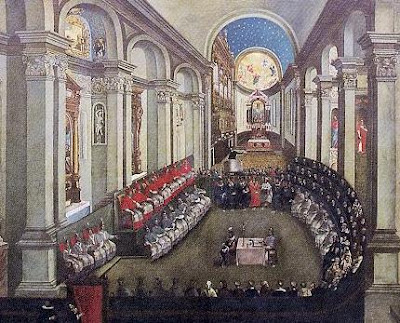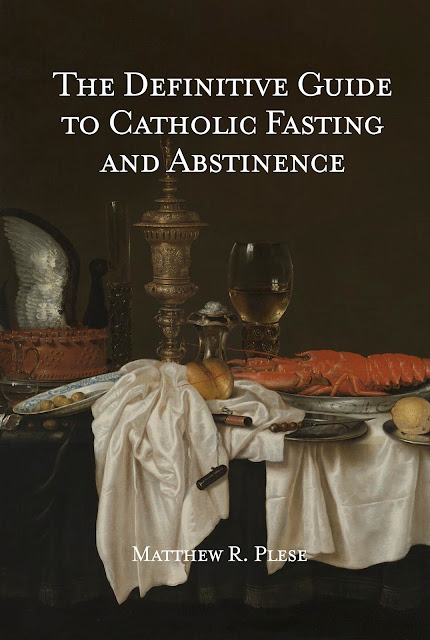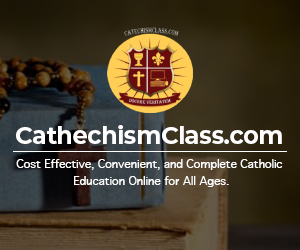Who Was Jan Huss?
Jan Hus (also known as John Hus) was a Czech religious philosopher and theologian who lived in the late 14th and early 15th centuries. He was born in Husinec, Bohemia (which is part of the modern-day Czech Republic) around 1369 AD and he died on July 6, 1415, in Konstanz, Germany.
Hus was a predecessor to Luther and his errors greatly affected the Faith. He believed that the Church had become corrupt and that its teachings had strayed from the true message of Jesus Christ. He was eventually excommunicated by the Church in 1411. Despite this, he continued to preach and gained a large following in Bohemia. In 1414, he was invited to the Council of Constance to defend his views, but he was arrested and tried for heresy. He was found guilty and burned at the stake on July 6, 1415.
Hus's ideas had a significant influence on the Protestant Reformation of the 16th century, particularly in his emphasis on the authority of the Bible and the priesthood of all believers. He is considered a national hero in the Czech Republic, where his ideas are still celebrated today, although the Czech Republic is known as one of the most atheistic countries in the world. The embrace of Protestantism ultimately leads to atheism.
What Did Huss Teach Against Catholic Doctrine?
The Council of Constance condemned 30 of Huss’s false teachings as heretical. They included the following:
1. There is only one holy universal church, which is the total number of those predestined to salvation. It therefore follows that the universal holy church is only one, inasmuch as there is only one number of all those who are predestined to salvation.
2. Paul was never a member of the devil, even though he did certain acts which are similar to the acts of the church's enemies.
3. Those foreknown as damned are not parts of the church, for no part of the church can finally fall away from it, since the predestinating love that binds the church together does not fail.
4. The two natures, the divinity and the humanity, are one Christ.
5. A person foreknown to damnation is never part of the holy church, even if he is in a state of grace according to present justice; a person predestined to salvation always remains a member of the church, even though he may fall away for a time from adventitious grace, for he keeps the grace of predestination.
6. The church is an article of faith in the following sense: to regard it as the convocation of those predestined to salvation, whether or not it be in a state of grace according to present justice.
7. Peter neither was nor is the head of the holy catholic church.
8. It is not necessary to believe that any particular Roman pontiff is the head of any particular holy church, unless God has predestined him to salvation.
9. The pope is not the manifest and true successor of the prince of the apostles, Peter, if he lives in a way contrary to Peter's. If he seeks avarice, he is the vicar of Judas Iscariot. Likewise, cardinals are not the manifest and true successors of the college of Christ's other apostles unless they live after the manner of the apostles, keeping the commandments and counsels of our lord Jesus Christ.
10. There is not the least proof that there must be one head ruling the church in spiritual matters who always lives with the church militant.
Grouping these together, we see two key issues: predestination and papal authority. He paved the way for Luther and his successors.
The Errors of Luther
One key figure in the Protestant Reformation was Martin Luther, a Catholic monk, who, led astray by private judgment, set himself against the Faith held for 1500 years. He decided that all Christians before him had been in error. Is it possible to believe that Jesus founded a Church to mislead the world, and then after 1500 years approved of over 500 contradictory church denominations founded by men? But, you may say, the Protestant Church is the Church of Christ, purified of error, and only this purified form dates from Luther. I answer that you must choose between Luther and Christ. Jesus said His Church would never teach error (John 14:26); Luther says it did teach error. If Luther is right, Christ is wrong; if Christ is right, Luther and all his followers are wrong.
Luther's chief errors are contained in the following propositions: (1) There is no supreme teaching power in the Church. (2) The temporal sovereign has supreme power in matters ecclesiastical. (3) There are no priests. (4) All that is to be believed is in the Bible. (5) Each one may interpret Holy Scripture as he likes. (6) Faith alone saves, good works are superfluous. (7) Man lost his free will by original sin. (8) There are no saints, no Christian sacrifice, no sacrament of confession, and no purgatory.
You can read more by clicking here.
Beyond Lutheranism
Martin Luther unleashed a holy war against the Church. Actual physical battles in defense of the Catholic Church exploded in Germany and abroad. His movement of protest was formally called Protestantism. The resultant physical conflicts in Germany alone caused the destruction of more than 1,000 monasteries and castles, the sacking of hundreds of peasant villages which were left in ashes, and the burning of the harvests of the nation. More than 100,000 were killed. Others, inspired by this easy and seductive way of finding salvation once for all times, were quick to pile on, each with a different interpretation of Scripture.
Who Was Zwingli?
Huldrych Zwingli (1484-1531) was a Swiss theologian and the leader of the Protestant Reformation in Switzerland. Zwingli's religious ideas emerged independently of Luther's in the early 16th century, yet both sought to attack the Christian Faith with a radically different doctrine than that which was preached for 15 centuries beforehand.
Zwingli took his own interpretation to Switzerland, where he taught that the actual body and blood of Christ was not present in the Eucharist, but only a representation. His interpretation of Scripture caused further consternation between not only the Catholic Church and his adherents, but also between Zwinglians and Luther’s adherents. John Calvin taught that only certain people were predestined to be saved. No amount of work by one not predestined could change God’s mind. Those not predestined were going to Hell. And as Protestantism spread, so did a myriad of different interpretations of Scripture emerge.
What Did Zwingli Teach Against Catholic Doctrine?
The Bible As the Sole Authority: Zwingli emphasized the authority of the Bible as the sole source of religious truth in a rejection of any other authority. Those familiar with the errors of sola-Scriptura can easily refute this since the entire history of the Church showed that authority was never found directly in the Scriptures. Even the Bible itself states: "Therefore, brothers, stand firm and hold fast to the traditions that you were taught, either by an oral statement or by a letter of ours."
Rejection of Church Tradition: Zwingli challenged the veneration of saints, celibacy of the clergy, and the use of images and relics. All of these ideas of his can be condemned through a study of history, Scriptural authority (ironically), and the teaching of the Apostles and their successors.
Denial of the Real Presence of our Lord in the Eucharist: The alleged “Reformers” were unanimous in rejecting Transubstantiation and the sacrificial nature of the Eucharist, and they argued endlessly over the Real Presence. Zwingli denied any Presence and called the sacrament a commemoration or symbol. Calvin accepted a ‘presence of power’ or spiritual presence. Luther believed in the Real Presence but not in Transubstantiation but a separate false doctrine called Consubstantiation. Zwingli actually so vehemently opposed Calvin and Luther that he declared them damned and ministers of Satan. Luther eventually wished to remove the doctrine and, in his words, give “a great smack in the face to popery,” but he declared that the Scriptures were too clear on the Real Presence of Christ to remove the doctrine.
Rejection of the Merits of Penance: Zwingli directed multiple attacks against the merits of good works, including fasting and abstinence, through the infamous “The Affair of Sausage” in 1522. He audaciously claimed that since Sola Scriptura was the only authority, sausages should be eaten publicly in Lent in defiance.
Who Was John Calvin?
John Calvin was born in Noyon, France, and initially studied law, but his interests soon turned to theology after he learned of Martin Luther’s new religion. In the early 1530s, Calvin fled from France to Basel, Switzerland, where he began to develop his theological ideas and wrote "Institutes of the Christian Religion” which was filled with the errors of predestination, sola scriptura, and others which became the foundation of the “Reformed” protestant sects.
In 1536, Calvin was invited to Geneva, Switzerland, where he became a leading figure in the city's Reformation. He sought to implement his ideas of church governance and moral discipline, which led to conflicts. After being initially expelled from Geneva, he was later invited back, and during his time there, he helped establish a theocratic government that emphasized a strong connection between Protestantism and state. Thankfully God raised up St. Francis de Sales to combat Calvinism who, by God’s grace, converted 72,000 heretics back to the Catholic Faith.
Calvin's teachings spread throughout Europe, and his influence extended to various Reformed movements in different countries, such as the Netherlands, Scotland, England, and parts of Germany. His theological ideas, known as Calvinism, became a major force in shaping Presbyterianism, Congregationalism, and Reformed Baptists.
What Did Calvin Teach Against Catholic Doctrine?
The Bible As the Sole Authority: Like Luther and Zwingli, Calvin emphasized the authority of the Bible as the sole source of religious truth in a rejection of any other authority. He rejected the Catholic view that tradition, along with Scripture, held equal authority in matters of faith. For Calvin, Scripture alone was sufficient for understanding God's will and receiving divine guidance. And like those who came before him, Calvin’s view is refuted by both Scripture itself and 1,500 years of actual Church history.
Justification by Faith Alone: Calvin, like other protestant founders, held to the doctrine of "sola fide," or justification by faith alone. He taught that salvation comes through faith in Jesus Christ alone and does not require us to live out our faith through any works, which contradict the teaching of our Lord directly.
Denial of the Visible Hierarchy Established by Christ: He opposed the hierarchical system of the Church which was established by Christ to have a physical earth, including the authority of the pope.
Rejection of Church Tradition: Calvin objected to the veneration of saints and the use of images and relics.
Denial of the Sacraments: Calvin recognized only two Sacraments— Baptism and the Eucharist – but he viewed even those two Sacraments as symbolic acts that pointed to spiritual realities and rejected the idea of Sacraments as channels of divine grace which affect what they signify. He therefore denied the Real Presence of Christ, the Sacrifice of the Mass, and even the efficacy of Baptism for Salvation. Those who were baptized as children in denominations that follow Calvin’s ideas should be conditionally baptized upon conversion to the Catholic Faith.
Predestination: One of Calvin's most controversial and egregious teachings was the doctrine of predestination. He believed in the concept of "double predestination," which asserted that God predestined some individuals to be saved (the elect) and others to be damned (the reprobate). He, therefore, rejected free will since a person is destined to either heaven or hell and cannot change their fate.
Various Congregational, Reformed, and Presbyterian churches look to these errors as their basis. We have a responsibility to work for the conversion of those ensnared in the errors of Calvin, and to that end, let us invoke the patronage of St. Fidelis of Sigmaringen who was martyred by the Calvinists for his defense of the Catholic Faith.
There is No Uniformity in Protestantism
Once Luther stated that the Bible was open to individual interpretation, the theological trail became crisscrossed with Biblical theorizing and harsh denunciations. Luther, Calvin, Zwingli, Anabaptists, and others all preached different pathways of what each described as the true road to salvation. And they all conflicted with each other. Just as 1 + 1 must equal 2, it is impossible for all of the conflicting and varied protestant groups to all be true. The truth is actually found only in the Catholic Church.







.jpg)



.jpg)
.jpg)
.jpg)
.jpg)







